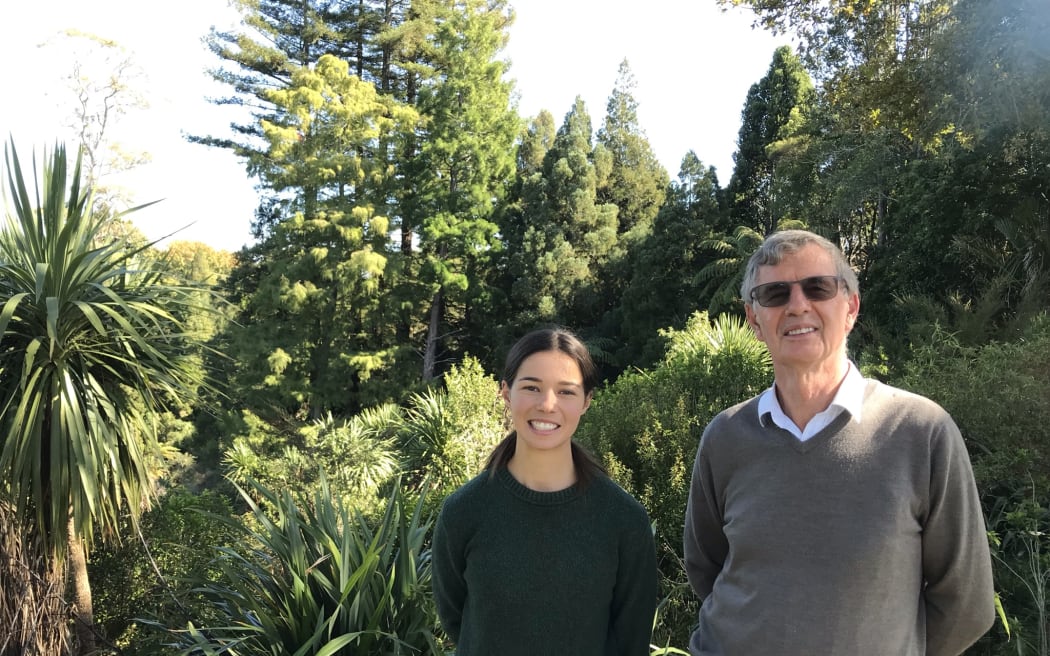For her Masters research at the University of Waikato, Hannah Rogers has gotten to know every green patch, nook and cranny of Kirikiriroa Hamilton.

Hannah Rogers and Professor Bruce Clarkson at the top of Seely's Gully Photo: RNZ / Claire Concannon
Follow Our Changing World on Apple Podcasts, Spotify, Stitcher, iHeartRADIO, Google Podcasts, RadioPublic or wherever you listen to your podcasts.
Within their Nature in the City Strategy, Hamilton City Council set themselves the ambitious target of moving from 1.8% to 10% native vegetation cover in Kirikiriroa by 2050. Across the city there are hundreds of patches of green that they could target for native regeneration. So where should they start?
What the council really needs is a priority list tool. Something that can point them towards the sites with the most potential for restoration.
And that’s exactly what Hannah has been working on.
She has mapped and visited different forest remnants, gullies, parks and patches of bush across the city to assess their potential to contribute towards this 10% goal.
Her research feeds into a wider body of work around urban ecological restoration. Led by her supervisor, Professor Bruce Clarkson, the People, Cities and Nature research programme investigates the best ways to bring biodiversity back into cities.
The programme involves multiple universities and institutions and conducts research in several urban areas around Aotearoa. Bruce says that while there are obvious challenges to urban restoration, there are many benefits too, both for nature, and for people.


